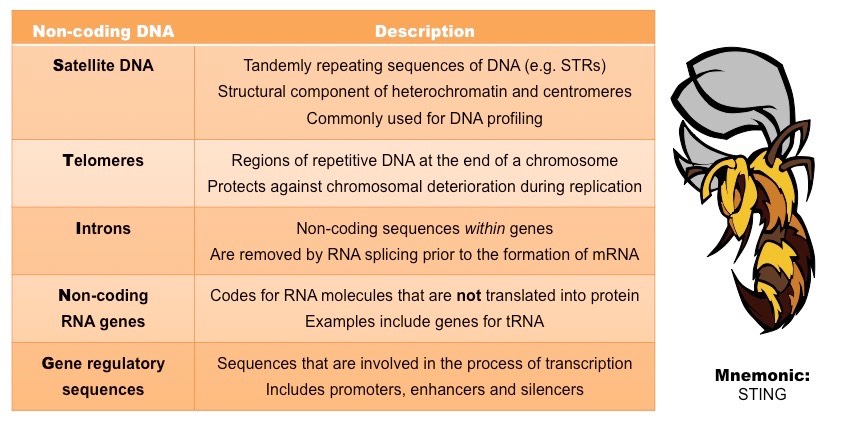![]()
Understanding:
• Some regions of DNA do not code for proteins but have other important functions
The vast majority of the human genome is comprised of non-coding DNA (genes only account for ~ 1.5% of the total sequence)
- Historically referred to as ‘junk DNA’, these non-coding regions are now recognised to serve other important functions
- Examples include satellite DNA, telomeres, introns, ncRNA genes and gene regulatory sequences
Types of Non-Coding DNA

![]()
Application:
• Tandem repeats are used in DNA profiling
DNA profiling is a technique by which individuals can be identified and compared via their respective DNA profiles
- Within the non-coding regions of an individual’s genome there exists satellite DNA – long stretches of DNA made up of repeating elements called short tandem repeats (STRs)
- Tandem repeats can be excised using restriction enzymes and then separated with gel electrophoresis for comparison
- As individuals will likely have different numbers of repeats at a given satellite DNA locus, they will generate unique DNA profiles
- Longer repeats will generate larger fragments, while shorter repeats will generate smaller fragments
Comparative STR Lengths at Two Specific Loci

